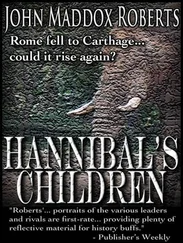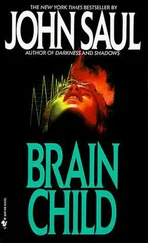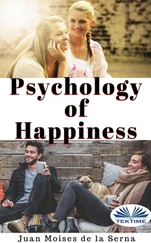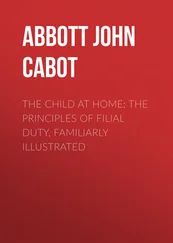1.2.1.3. Studies from childhood
1.2.1.3.1. The Millennium Study
The Millennium Study is a longitudinal study of a cohort of 18,818 children born in the United Kingdom between September 2000 and January 2002 (Connelly and Platt 2014). It is a multidisciplinary investigation designed to capture the effects of social, economic and health advantages and disadvantages on child development and other outcomes. There have been six surveys to date. The first was collected at about nine months of age, followed by surveys at ages 3, 5, 7, 11 and 14. At the end of the fifth survey, 13,287 children remained in the study.
1.2.1.3.2. The CABLE (Childhood and Adolescent Behaviors in Long-term Evolution) Study
The CABLE Study is a lifestyle research study in which 18 elementary schools were randomly selected in Taipei and Hsinchu, Taiwan. Data on gender, parent–child relationships and internalized symptoms from four waves of follow-up were analyzed: 2003 (9 year-olds), 2006 (12 year-olds), 2009 (15 year-olds) and 2012 (18 year-olds). A latent growth model was used to examine the impact of parent–child relationships and gender on the trajectory of children’s internalized symptoms.
1.2.1.3.3. The Bergen Study
The first wave of the longitudinal Bergen Child Study (BCS) assessed a wide range of mental health problems in a total population of Norwegian schoolchildren aged seven to nine years (n = 9,430), using teacher and parent questionnaires in all schools, including special and private schools. Teacher questionnaires (n = 9,152) covered 97% of the population, whereas parent questionnaires (n = 6,295) covered 67% of the population.
1.2.1.4. Studies from adolescence: the ABCD (Adolescent Brain Cognitive Development) Study
The Adolescent Brain Cognitive Development (ABCD) Study is the largest long-term study of this type, relating to the relationship between cognitive development and subject health in the United States. It was launched in 2015, just before participants’ adolescence (11,878 subjects aged 9–10 years), at 21 research sites across the country to augment data collection such as neuropsychological assessments, biopsies and structural and functional neuroimaging data. The follow-up is planned to last 10 years. In addition to obtaining a nationally representative sample on adolescent brain development, other themes have been added to the survey: gender influences and, cardiovascular and hematological health.
To conclude this brief methodological presentation, there have, of course, been other longitudinal studies around the world, but the sample presented above is representative of the main types.
1.2.2. The issue of experimental mortality and retention
Continued participation is essential for the validity of longitudinal studies, such as ABCD, where families are asked to participate in the study throughout the 10-year period.
This therefore means communicating with families every six months by phone and annually in person, and more closely with youth in person as they transition into adolescence.
Moreover, while it is possible to lose a fraction of the subjects, the risk to ongoing validity is mainly non-random loss, which is sometimes not immediately perceived by the experimenters.
When a socioeconomic or sociocultural subgroup becomes progressively underrepresented, the results of the study are no longer generalizable to those subgroups. Similarly, the most at-risk families may be the ones most easily lost to the study, which will compromise the usefulness of the study for these populations.
1.3. To what extent is a dialog or coming together possible between developmental psychology and psychoanalysis? Between the observable and the repressed
Psychoanalysis and developmental psychology have been the two main avenues for approaching the mental functioning of children.
Psychoanalysis operates by reconstructing clinical data obtained during the treatment of children or adults. Developmental psychology seeks to highlight individual differences through observation or comparisons of groups of children, or by studying their developmental trajectories. The psychoanalytical approach to children, which is often therapeutic, focuses on a small number of cases, while the second approach is more experimental and based on statistics.
Are the two approaches completely irreconcilable, or is a coming together, a dialog, possible?
Some psychoanalysts do not think this dialog is possible, such as André Green, who spoke of the “true child” of psychoanalysis deduced from reconstructions and the “real child” of observation, where it was not possible to reach what was repressed. Nevertheless, other authors, such as Pierre Fédida, desire a “unified science” of development, where the results obtained by either of the approaches can be enlightened by the other.
Attachment is one of the most successful examples of the dialog between psychoanalysis and developmental psychology. This theme has brought together approaches as diverse as Bowlby‘s theory of attachment (presented later in this book), Lacan’s family complexes, Bion’s maternal alpha function, Winnicott’s good enough mother, Brazelton’s competence of the baby in communicating with its environment from birth, Lebovici and Golse’s transgenerational mandate, Balint’s primary attunement and Stern’s interpersonal world of the infant.
Between Bowlby’s theory of attachment and Melanie Klein’s objectal relations theory, a coming together is possible and was developed by Didier Anzieu with his “ pulsion d’attachement ” and “ Moi-Peau ” concepts.
1.4. Between psychology and epidemiology, developmental psychopathology
Unfortunately, due to lack of time and interest, psychoanalysts do not read articles on behavioral genetics and behavioral geneticists do not read articles on psychoanalysis, not even those about particular behaviors, alcoholism or delinquency. Yet these two bodies will influence generations of pediatricians, specialized journalists and therefore parents. Ideally, we need to take a step back, to look at the “big picture”, to consider what connects and what does not mutilate knowledge, as Edgar Morin says. We have evoked (Assailly, 2007) the idea of a “river thought”, that is, a thought capable of carrying all the alluvium that is brought to us by the currents of thought on the child.
This “river thought” is one of interaction: from the first cell division, each fact, each biological, psychological or sociological event defines us; some weigh very heavily, such as the early relationship with our mother; others, very little, such as a temporary family stress, but the approach must integrate all these elements
For example, what can epidemiology (the science that studies phenomena at the population level) contribute to psychology (the science that studies phenomena at the individual level), and vice versa? In fact, one needs the other: epidemiology needs the observations of psychology in order to understand, within the broad variability of human behavior, what does or does not emerge from pathology; to launch hypotheses on the relationships between the problems of children and the factors that explain these problems, to understand how what it calls “risk” or “protection” is constructed. Psychology needs epidemiology to ensure that what it has observed in a small selected sample of subjects can be found elsewhere, at another time.
These are complementary, rather than conflicting disciplines, each fulfilling its function at different times in the research process. Between these two disciplines, there is a space to create a median approach: developmental psychopathology, in other words, the developmental approach to psychopathological and maladaptive phenomena.
Читать дальше












